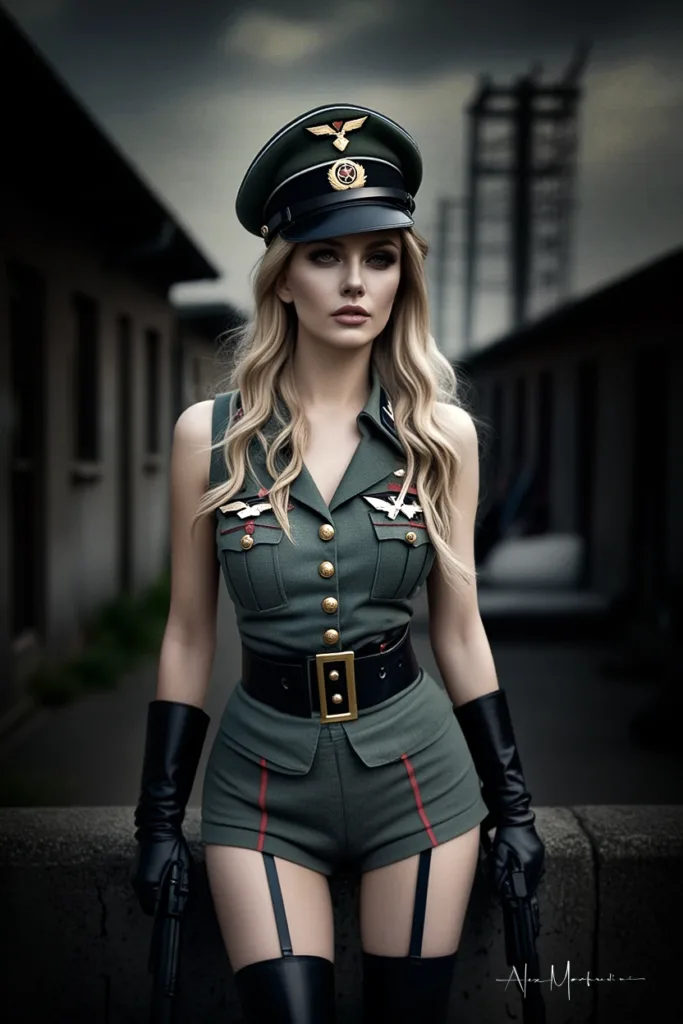
“Martial Temptation” by Alex Manfredini
Table of Content
1. Beyond Beauty: The Emotion Behind the Image
In the art of portrait photography, every frame holds a story waiting to be told.
While many see portraits as an exercise in capturing beauty, the real power lies in capturing emotion and narrative — the unspoken truth behind the subject’s expression.
A portrait that tells a story connects with viewers on a subconscious level. The way light touches skin, the tension in a jawline, the texture of fabric — each becomes part of a larger emotional language that moves beyond aesthetics.
When a viewer pauses on an image, it’s because they feel something. That’s the magic of narrative in photography: beauty becomes emotion, and emotion becomes timeless.
2. Costume: The Architecture of Character
Wardrobe is more than styling — it’s story architecture.
In fine art portraiture, every costume choice helps define the subject’s personality and emotional state.
Whether it’s an elegant gown, a stylized uniform, or minimal fabric, clothing conveys identity before the subject even moves. Textures, fabrics, and colors influence perception:
- Dark tones evoke power and mystery.
- Soft fabrics communicate vulnerability or sensuality.
- Structured silhouettes imply authority or discipline.
Costume transforms a model into a character — one that invites viewers into a visual narrative filled with subtext and mood.
When I plan a conceptual shoot, I always ask:
“What does this person’s story feel like — and what should they wear to make the viewer feel it too?”
3. Pose: The Body Speaks the Language of Emotion
Every pose is a sentence. Every gesture, a word.
The body tells its own story long before the gaze meets the lens.
A squared stance signals strength. A subtle curve of the shoulder reveals softness. Even the position of hands can express vulnerability or power.
The key is authenticity. Rather than forcing “perfect” poses, guide emotion. Encourage the subject to feel something real — loss, pride, calm — and let their body respond naturally.
When that happens, the portrait shifts from posed to alive.
“Great posing isn’t about replication — it’s about direction and emotion.”
4. Gaze: The Silent Conversation
The gaze is where the story breathes.
Eyes are emotional magnets — they connect the subject to the viewer in a private conversation.
- A direct gaze can challenge or seduce.
- An averted gaze invites curiosity.
- Closed eyes whisper reflection or serenity.
The gaze gives viewers permission to enter the photograph, transforming it from an image into a dialogue.
Capturing that authenticity often means waiting for the moment when the subject stops performing and starts feeling. It’s fleeting — but unforgettable.
5. Light: The Invisible Narrator
If costume, pose, and gaze are the story’s characters, light is the narrator.
Light shapes emotion. It decides what to reveal and what to hide. Soft light creates poetry; harsh light creates tension. Backlight romanticizes, side light dramatizes.
When used intentionally, light doesn’t just illuminate — it interprets.
It adds punctuation to your visual story: a pause, a whisper, or an exclamation.
6. The Photographer as Director
Narrative portraiture is about intentional design. You’re not merely taking a picture — you’re directing a scene.
From pre-production mood boards to final retouching, every choice should align with your emotional goal. Consider:
- Who is this character?
- What emotion do I want to evoke?
- What is the story the viewer should walk away with?
When these choices harmonize, you elevate your work from photography to cinema in still form.
7. The Viewer: Completing the Story
A great portrait doesn’t explain everything — it invites curiosity.
The most powerful images allow the viewer to finish the story themselves. They interpret the subject’s thoughts, emotions, and motivations through their own life experiences.
This interplay between creator and audience transforms photography into a shared emotional experience.
That’s when art transcends image — when it becomes memory.
8. From Image to Icon: When Stories Become Legacy
The portraits that endure are those that move us.
They speak across decades because they capture something universal — truth.
Ansel Adams once said:
“A great photograph is one that fully expresses what one feels, in the deepest sense, about what is being photographed.”
That’s the essence of narrative portrait photography. It’s not about perfection. It’s about emotional honesty.
When costume, pose, and gaze align, they form a universal language that resonates across time — the kind of storytelling that doesn’t need words.
9. Final Thoughts: Seeing Beyond the Surface
In portrait photography, beauty draws attention — but story captures the soul.
Every image you create holds the potential to whisper a narrative that’s personal, emotional, and unforgettable.
Through costume, pose, and gaze, you reveal who your subject is, not just what they look like.
The next time you stand behind the camera, ask not only how it looks, but what it says.
Because the most powerful portraits aren’t just seen.
They’re felt.
©2025 Copyright Alex Manfredini
